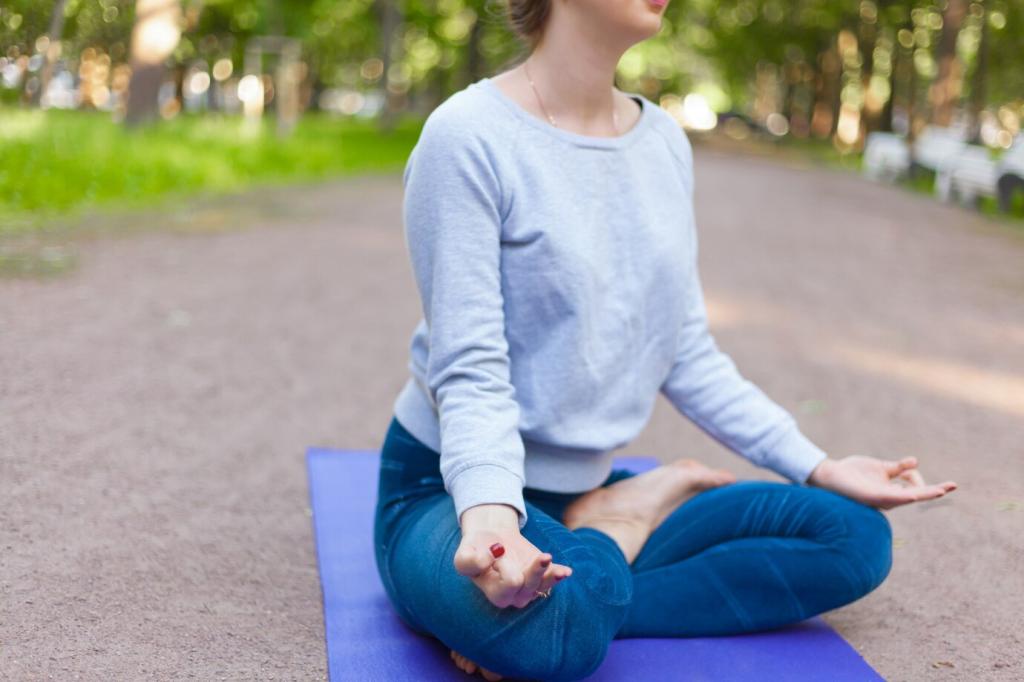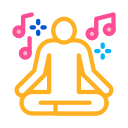
Breathe Ease: Mindful Breathing Exercises for Reducing Stress
Chosen theme: Mindful Breathing Exercises for Reducing Stress. Welcome to a calm corner of the internet where your breath becomes a steady anchor. If life feels loud, lean in—today we build simple, reliable breathing rituals that lighten pressure and restore presence.


Why Breath Calms the Storm
Stress pulls the body into fight-or-flight, speeding heart rate, thoughts, and tension. Slow, lengthened exhales stimulate the vagus nerve, nudging the parasympathetic system to switch on. That means slower pulse, looser shoulders, and kinder inner dialogue—physiology quietly steering you from panic toward presence.
Why Breath Calms the Storm
Mindfulness is paying warm attention without judgment. When you notice your inhale and exhale in real time, you interrupt autopilot reactions. Awareness lowers reactivity, while steady breathing modulates arousal, creating a feedback loop where noticing and calming reinforce each other throughout stressful moments.
Box Breathing (4–4–4–4)
Inhale for four, hold for four, exhale for four, hold for four—repeat four rounds. Keep shoulders relaxed and jaw unclenched. Imagine tracing a square with each phase. Use it before meetings, tests, or calls. If holding feels tense, shorten the holds and prioritize smooth, quiet exhales.
4–7–8 Breathing for Soothing
Inhale through the nose for four, hold seven, exhale through pursed lips for eight. The long exhale encourages a stronger relaxation response. Start with two to three rounds, especially if breath-holds feel challenging. Many people use this at bedtime to settle racing thoughts and drift into deeper sleep.
Coherent Breathing (5–6 Breaths per Minute)
Breathe in for five counts and out for five counts, continuing for five minutes. This rhythm can improve heart rate variability, a marker of resilience. Pair with gentle posture, softened gaze, and quiet counting. If you prefer cues, time breaths with slow steps during a calm, mindful walk.
Make It Fit Your Day
Place both feet down, lengthen your spine, and relax shoulders. Try six slow cycles of five-in, six-out. Notice subtle details—the cool inhale, warmer exhale, and loosening brow. Finish by naming one helpful next action. Share your favorite quick reset with us in the comments.

The Two-Minute Stress Log
After a breathing session, jot down: time, situation, tension level before and after, and one body cue you noticed. Over a week, look for trends—what times help most, which techniques stick. Post your favorite prompt below so the community can borrow it for their own journals.
Signals of Progress to Notice
Progress often shows up as earlier awareness, faster recovery, and kinder self-talk. Perhaps your shoulders drop sooner, or you catch spiraling thoughts quicker. Celebrate these subtle wins. They indicate your nervous system is learning safety and choice, not perfection or constant calm in every situation.
Celebrate Tiny Wins Together
Choose one micro-goal: two mindful breaths before opening email each morning for five days. When you complete it, share your experience in the comments. Did your tone soften? Did decisions feel clearer? Subscribe for accountability check-ins and new bite-size challenges delivered to your inbox weekly.
Overcoming Common Hurdles
Pause, sit down, and let your breath return to normal. You may be breathing too forcefully or holding too long. Next time, shorten holds and focus on gentle, quiet exhales. If dizziness persists, consult a healthcare professional. Share what adjustments help you regain comfort during practice.

Overcoming Common Hurdles
Give your mind a job: count breath cycles up to four, then reset. Or label distractions kindly—thinking, planning, remembering—and return to exhale length. You are training attention, not erasing thoughts. Tell us which cue word steadies you, so others can experiment with it this week.


Build a Habit That Sticks
Day 1–2: two minutes of box breathing. Day 3–4: three minutes of coherent breathing. Day 5–7: your choice, plus a short reflection. Keep it light and playful. Join our free seven-day challenge and subscribe for daily nudges that keep your practice practical and encouraging.
Build a Habit That Sticks
Attach two slow breaths to everyday anchors: unlocking your phone, opening your laptop, or turning on the kettle. Habit stacking removes decision fatigue and builds momentum. What anchor will you try today? Comment below so others can steal your great ideas and experiment this afternoon.
From Traditions to Today
Breathwork appears in yoga’s pranayama, Zen practice, and monastic prayer. Today, studies link slow breathing to improved heart rate variability and reduced anxiety. It is simple, portable, and free. Share an article or book that helped you, and we will compile a community reading list.
